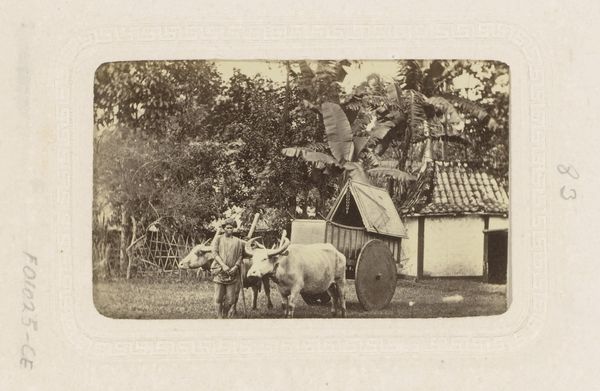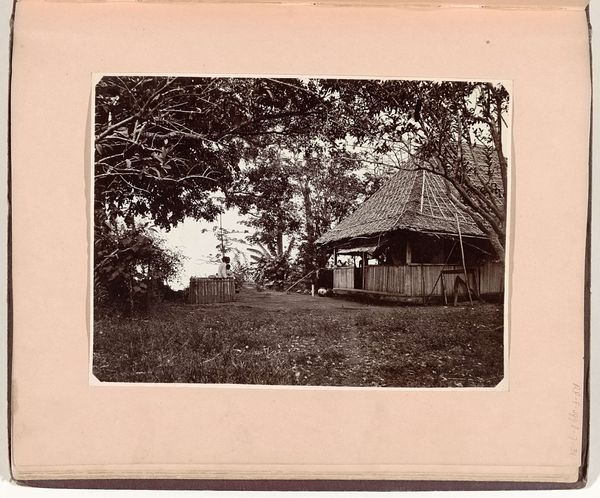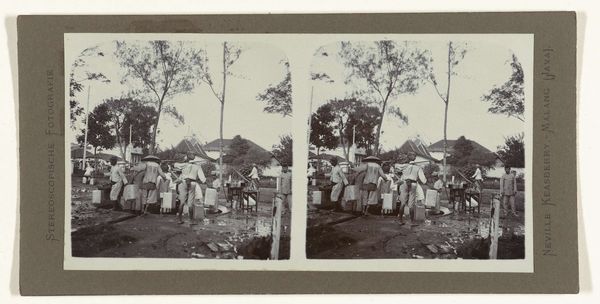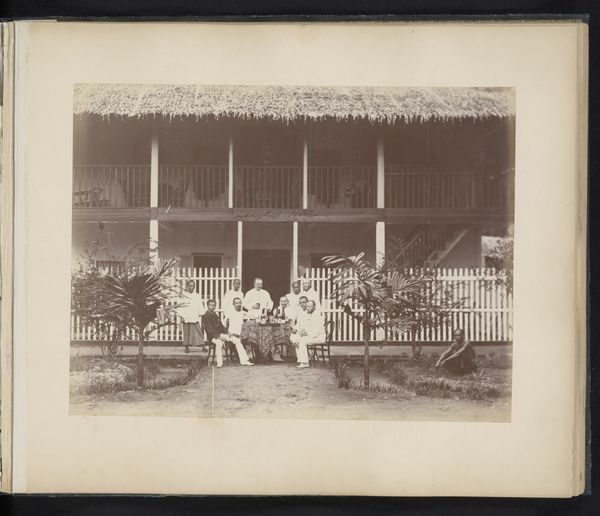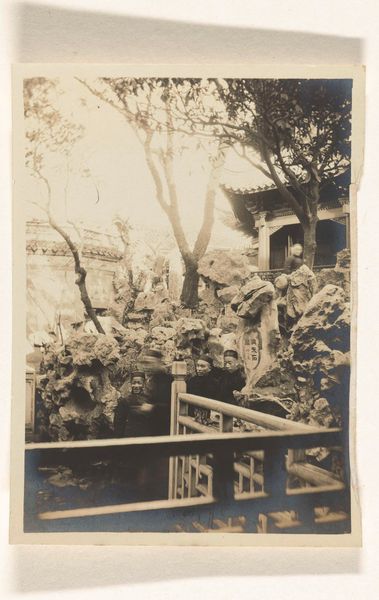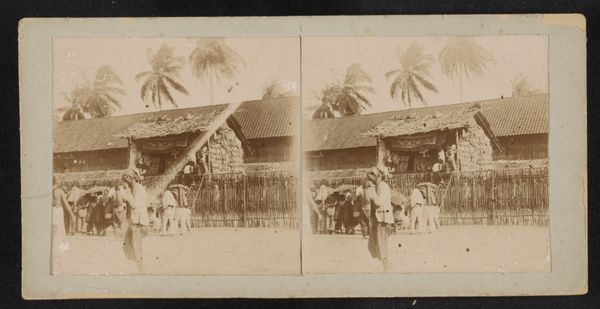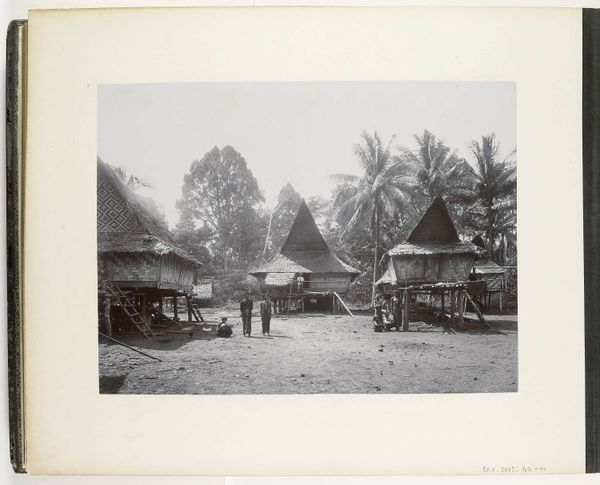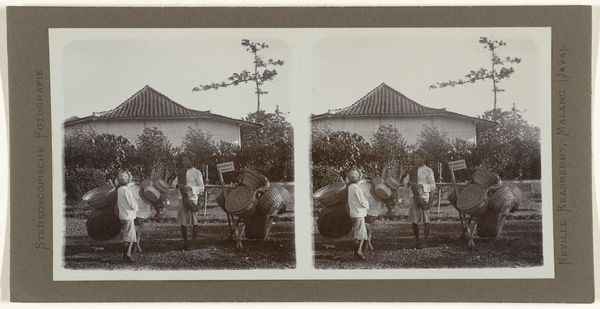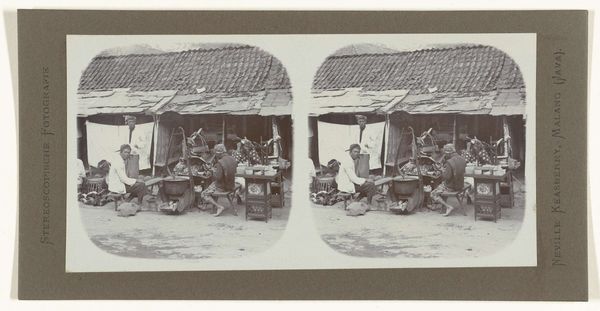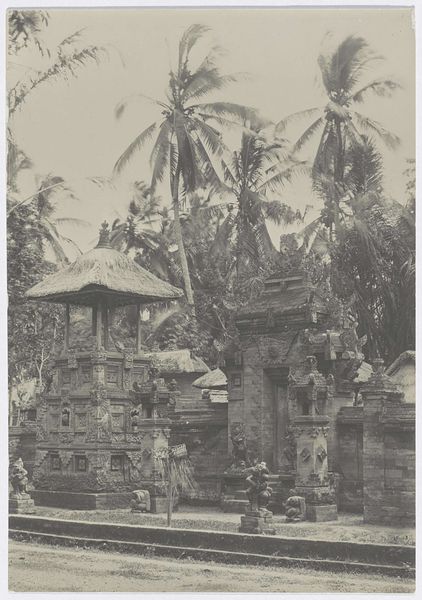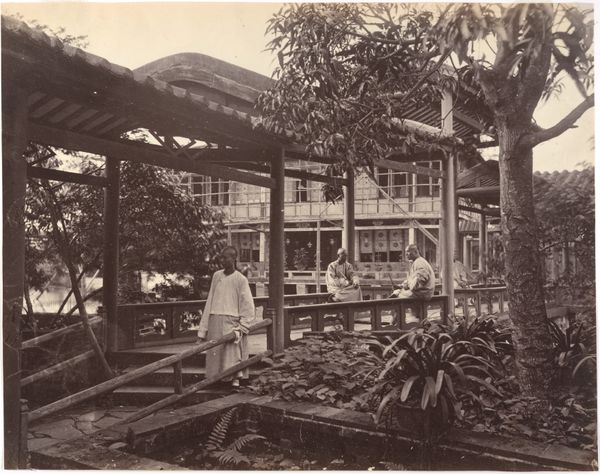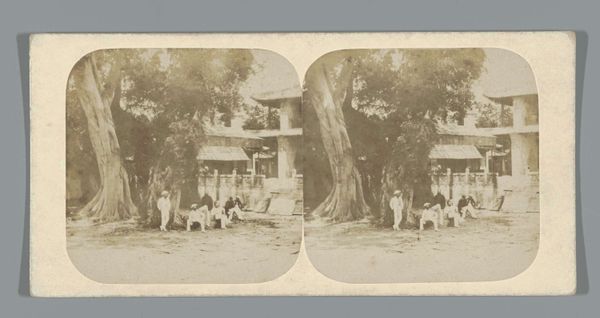
photography, gelatin-silver-print
#
portrait
#
african-art
#
landscape
#
street-photography
#
photography
#
gelatin-silver-print
Dimensions: height 76 mm, width 152 mm
Copyright: Rijks Museum: Open Domain
Editor: This is a gelatin silver print called "Portret van twee kinderen als straatverkopers," or "Portrait of two children as street vendors," by Neville Keasberry, dating between 1900 and 1935. It shows two children in what appears to be Java, holding towering constructions of goods for sale. What strikes me is the stillness of the subjects versus the suggestion of commerce. How do you interpret this work? Curator: This photograph offers a powerful glimpse into the socio-economic realities of children working as street vendors in early 20th-century Java. Instead of seeing just a quaint scene, consider the systemic inequalities at play. What does it say about childhood, labor, and the colonial context? The staged nature suggests an outsider perspective, doesn't it? How might Keasberry's identity as a photographer from a colonizing nation impact the framing of this image? Editor: It's definitely not the image of childhood that I am used to! That's interesting, thinking about the colonial lens and the staging. The children’s gaze seems averted, perhaps shy, maybe resistant? It makes you wonder about their agency in the image. Curator: Precisely. The averted gaze disrupts the directness of a traditional portrait. Do you think it invites empathy or distances the viewer? Consider, too, the contrast between the labor they perform and the romanticized "landscape" behind them. How might the aestheticization of poverty function within the larger framework of colonial power? Editor: It’s uncomfortable. I hadn’t really considered that these vendors might also have been performers for tourists, turning their lives into a kind of spectacle. I guess I saw the landscape, and just saw a pretty picture! Curator: Seeing that discomfort is crucial. Examining art through a lens of power and privilege is never comfortable, but vital to understanding not just the art itself but also the world that shapes it and us. Editor: Thanks. I’ll definitely be thinking about context more consciously from now on.
Comments
No comments
Be the first to comment and join the conversation on the ultimate creative platform.
